Until 30 May 2013 the Textile Museum of Prato hosts “Vintage. L’irresistibile fascino del vissuto” an exhibition that explains the spreading and the evolution of second-hand clothing in costume history since Middle Age to nowadays.
On December 7th I attended the press preview of the exhibition and thanks to the curator Daniela Degl’Innocenti I took a long route through the “re-use of clothes and textiles” practice.
The exhibition begins with a small and unusual object from the Florentine area, the funeral pillow of Bishop Antonio Bellincio degli Agli made as a patchwork of wool and silk pieces from the first half of the fifteenth century. It shows how every little piece of fabric was considered important, especially if we think that already in the Middle Age the second-hand clothing market was regulated by the Rigattieri (second-hand dealer) corporation and used-clothes could reach inestimable values, due to the fabrics and the tailoring. Even noble families were used to give precious clothes legacies to religious corporations so they can reuse them to make new religious vestments or even clothes for sacred images/statues as the exhibited one.
The re-using clothes practice survives to the fashion dictates and on display there are some examples of how, already in the nineteenth century, there was a tendency to be inspired by the style of the previous centuries reshaping inherited garments according to the new silhouettes. Looking at those gold brocades from the eighteenth century re-modeled as a crinoline evening dress of the nineteenth century, it is natural to wonder if nowadays (in crisis period), we are so far from those “patching-up times”, especially if we consider the spreading of cobblers and seamstresses in our city centres.
On the upper floor, we enter the core of the exhibition with a quote taken from Maledetti Toscani by Curzio Malaparte, investigating the relationship between the practice of reuse and the history of Prato.
“In Prato ends the all history of Italy and Europe: all in Prato, in rags.”
Since the introduction of the macchina stracciatrice (mid nineteenth century) which was used to obtain regenerated wool from rags, the Tuscan city has become the worldwide collection center of used clothing and in the post-world-war II, the recovery of raw material allowed the survival of Prato textile district.
On display there are huge packages of used clothing full of “vintage treasures” carefully selected by emblematic figures such as Giovanni Masi, the pioneer of the Italian second hand market, who opened his collecting center in the 50s, still visited nowadays by scholars, stylist, costume and fashion designers for their researches.
Giovanni Masi was one of the first who understood the social importance of the second-hand phenomenon since when, in the late 60s, his stores in Vergaio (just outside Prato) were overrun by young students who bought used clothing as a sign of protest to the conformism of bourgeoisie.
The phenomenon exploded in the 70s and the mannequins on display testify the fashion themes derived from this new “street style”: ethnic and gypsy, with leather garments, sheepskin jackets, embroidered traditional costumes or printed fabrics from Africa; military style with mandarin collar jackets, parkas and military uniforms. Even high fashion designers reread these new stylistic themes, creating a new taste, close to the younger customers and giving rise to one of the most eclectic period the twentieth century.
The phenomenon exploded in the 70s and the mannequins on display testify the fashion themes derived from this new “street style”: ethnic and gypsy, with leather garments, sheepskin jackets, embroidered traditional costumes or printed fabrics from Africa; military style with mandarin collar jackets, parkas and military uniforms. Even high fashion designers reread these new stylistic themes, creating a new taste, close to the younger customers and giving rise to one of the most eclectic period the twentieth century.
The Nineties transformed vintage market into a mass phenomenon and no one could escape from the charm of “used patina” also developing industrial processes which reproduce the effects of the natural decay of garments.
Among the pieces on display in this section we can see an interesting group of creations by Martin Margiela obtained by the disassembly and reassembly of vintage clothes or objects such as the necklace made of Ray Ban lenses, a top-tank made of the black leather gloves or a jacket made of the outer lining of the dressmaker’s dummies.
Another recent trend among high fashion brands is the re-edition of archival items that have marked the style of an era. It ‘s the emblematic case of the commercial success of Frida Giannini for Gucci, who year after year has reinterpreted iconic pieces such as the Jackie O bag, Bamboo Bag and fantasies of the Flora scarf or the latest Stirrup bag.
Among the other items on display there are: a series of Emilio Pucci dresses from the 60s replicated in a miniature limited edition collection of 2009; the Chanel 2.55 bag in its first original version and the current one; the Hermés Kelly bag in classic orange leather or the latest version with hemp; and finally Salvatore Ferragamo shoes, re-edited for a special line made of archive models.
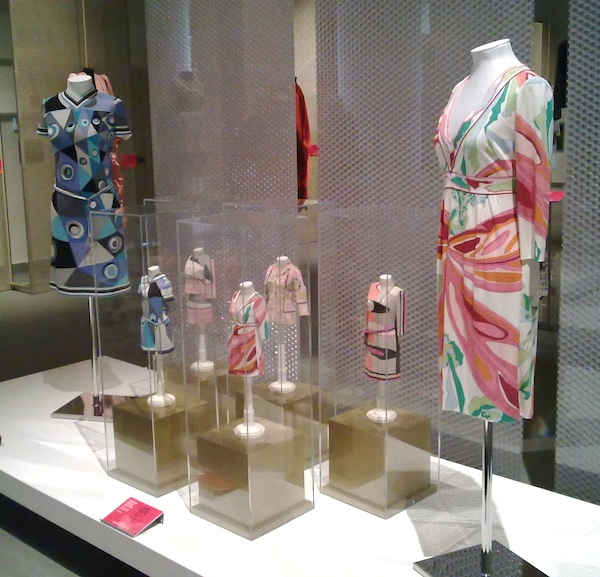 |
| Emilio Pucci, 60s dresses, mignon re-edition 2009 |
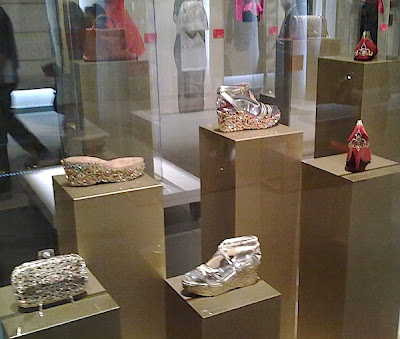 |
| Salvatore Ferragamo re-edition |
| Gucci Flora scarf and Bamboo bag – Alessandro Moggi Photographer |
The exhibition ends with a great corner dedicated to A.N.G.E.L.O. temporary shop. The store/archive born by the idea of Angelo Caroli, a worldwide reference in the vintage clothing field who showed us the most important pieces for sale as the iconic furs by Yves Saint Laurent or the very rare knitted garments studded with sequins by Romeo Gigli, as well as evening gowns, tuxedos and suits of every conceivable brand. He told us he began his activity by rummaging in the warehouse of Giovanni Masi looking for special items and soon he turned his passion into work, giving rise to an endless store/archive. The clothes (about 300,000) divided by epoch and themes, are daily selected and studied by worldwide fashion experts and designers who will carry on the fashion cycle.
Alessandro Masetti – The Fashion Commentator
Special thanks to: Maddalena Torricelli press office
Credits: photos 3,6,8,10,25 – Alessandro Moggi Photographer
Credits: photos 3,6,8,10,25 – Alessandro Moggi Photographer
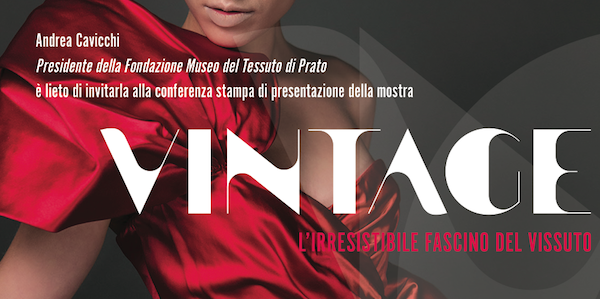
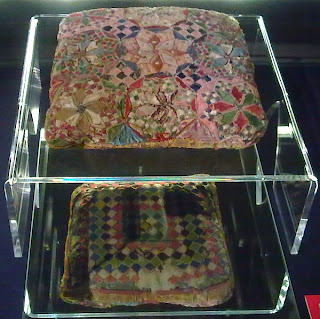
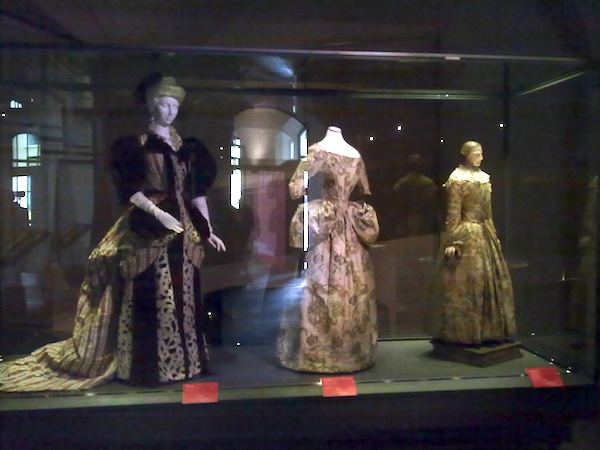
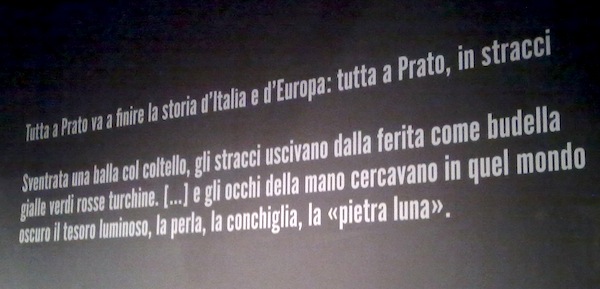
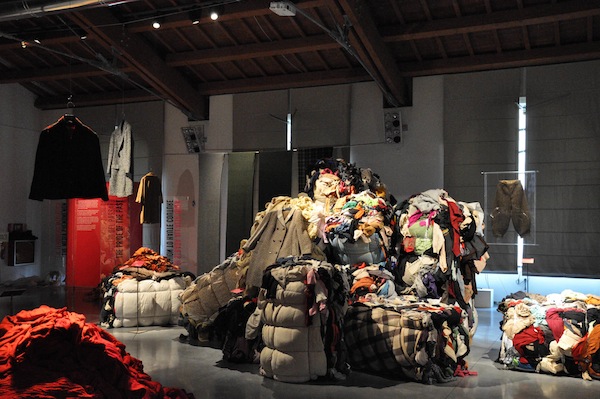
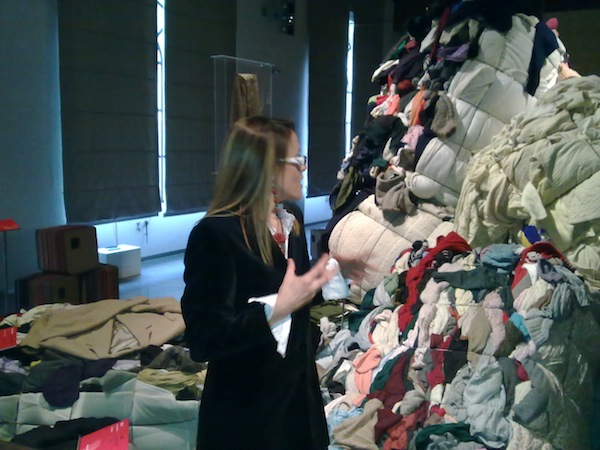

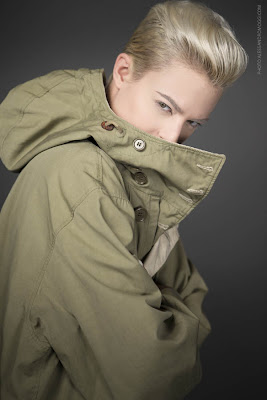
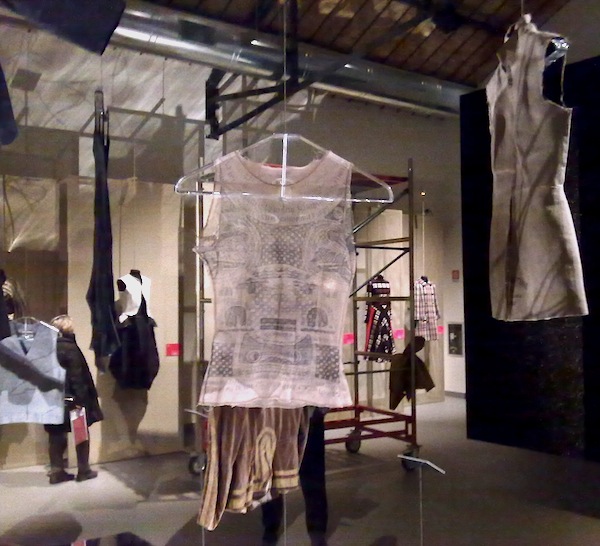
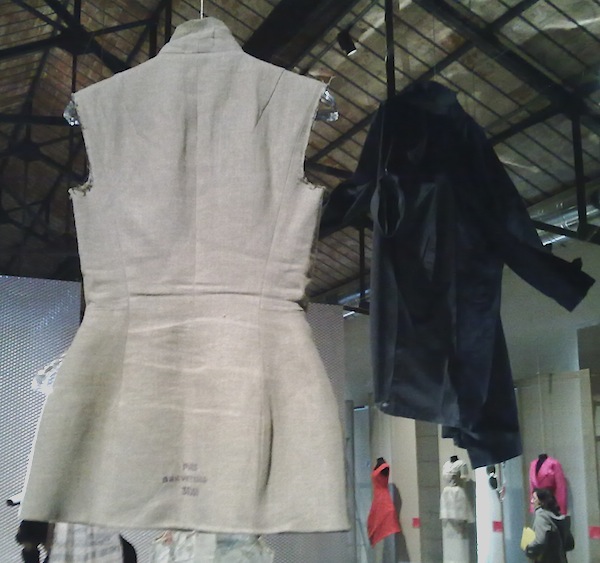
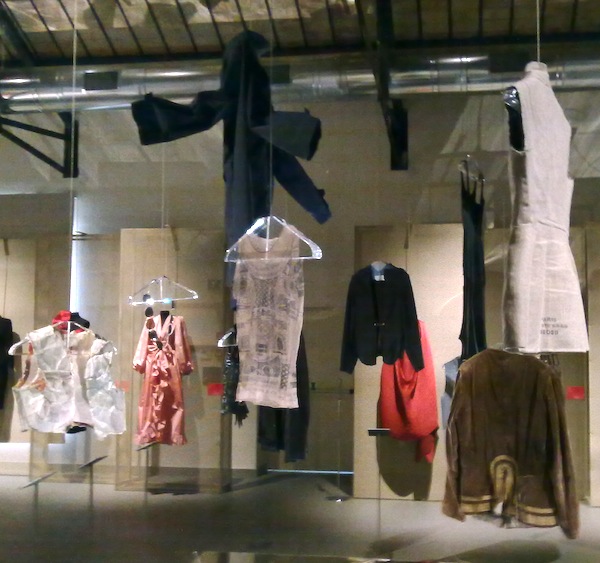

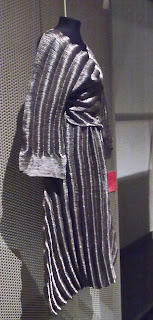

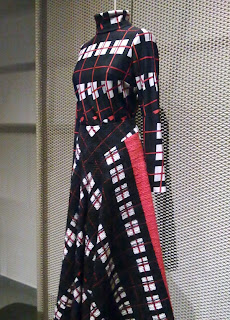
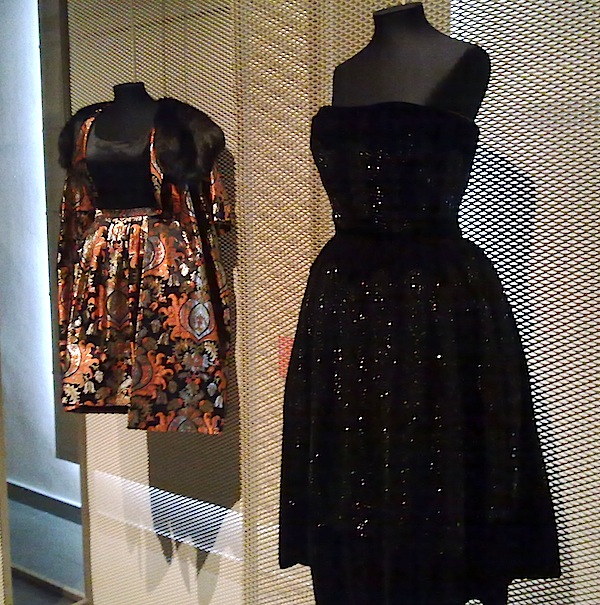

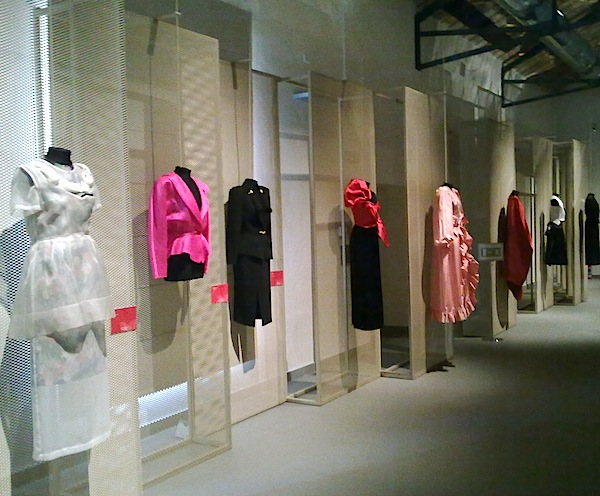
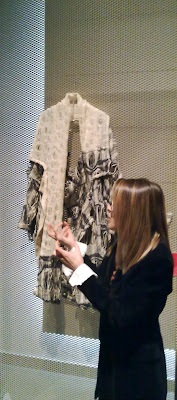
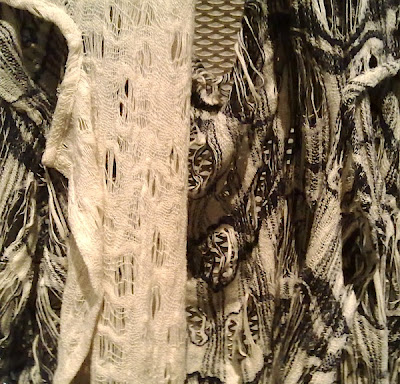
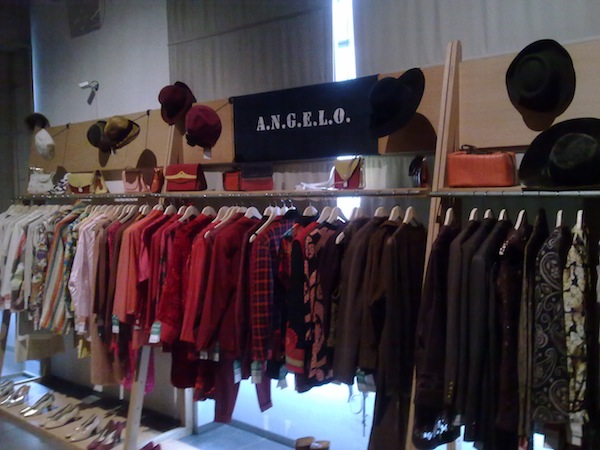



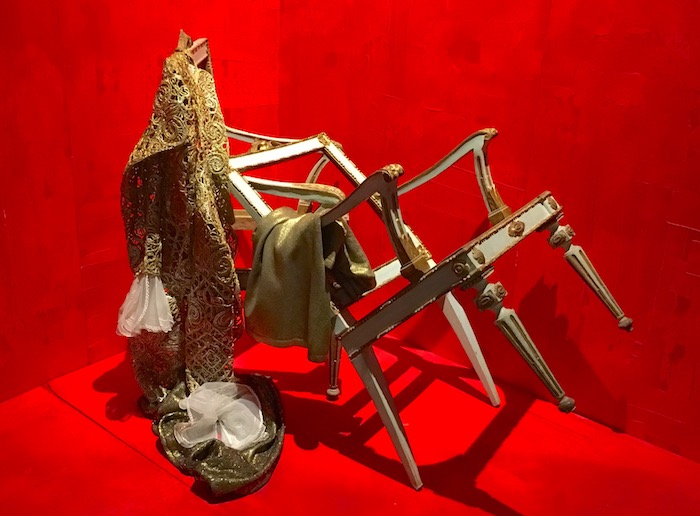
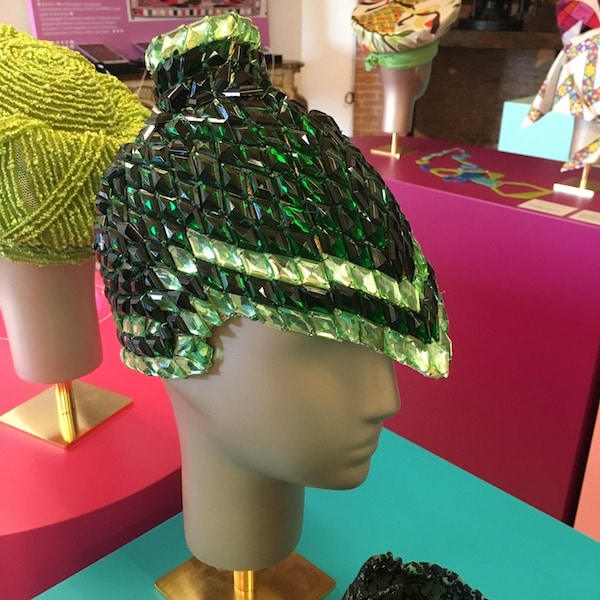
Angelo lo conosco, viene sempre a una fiera vintage famosa qui vicino e ha anche un negozio a Milano se non sbaglio, bellissima la mostra, questi sono i luoghi che andrebbero conosciuti anche perché è un archivio storico di moda e chi di moda vuole intendersi non può farsi sfuggire certe occasioni.
Lorenzo B (non ho voglia di fare login su blogger oggi).
Ciao ale, un abbraccio
Lollo vista la tua ritrovata attività di modista, sono certo che tu conosca benissimo Angelo. Io vorrei riuscire ad andare a Lugo per visitare l’archivio. Deve essere un’esperienza senza ritorno…nel senso che ci pianterei le tende e non uscirei più da lì!
ciao Alessandro, sempre molto interessante solfeggiare tra un post e un altro sul tuo blog, articolo da leggere per apprendere tante cose, ma ti stupiro’ le balle di stracci gia’ le conoscevo….ma ti diro’ , difficile trovare il contesto adatto…la mia parrucchiera ne ha messe ovunque…martin margiela uno dei miei preferiti!
elena
http://www.tuttepazzeperibjoux.com
Grazie Maria Elena! Ti garantisco che rovistare tra quelle balle nei capannoni è un’esperienza unica. Meglio se fatto durante le mezze stagioni quando non fa né troppo caldo, né troppo freddo! 😉
Senza ombra di dubbio…una fantastica mostra da visitare!
Complimenti per questo post e per il tuo blog!
Buona giornata!
Barbara
http://www.bbonton.it
Ciao Barbara! Grazie per i complimenti e la tua visita! 😉
fantastico,il tuo blog è meglio di una rivista, complimenti
Grazie infinite!
Bellissimo post; le mille sfaccettature del riuso (con ascendenze antichissime), del vintage, delle riedizioni sono interessantissime.
Sai che ero convinta che la Lady Stirrup fosse d’ispirazione anni Cinquanta?
Stupendi i modelli di Miyake e di Roberta di Camerino.
Angelo è un mito ma a quanto sembra lo stesso vale – e forse ancor di più – per Giovanni Masi.
Che bello vivere in un luogo in cui ci sono cose così interessanti da vedere (e ovviamente mi sto limitando alla moda).
Ciao Ale, ci sentiamo presto
Ciao Ale! La Lady Stirrup che dici te è un ibrido di due borse storiche di Gucci, un bauletto e una doctor bag. Io mi riferivo a quella dalla forma “tagliente” molto più definita (quasi triangolare) presentata nelle penultime collezioni. ( vedi qui un esempio: http://www.gucci.com/it/styles/277514CIJAG8737# )
Pensa che io andai nel grandissimo magazzino di Giovanni Masi per la prima volta più di 7 anni fa. Con i miei compagni delle superiori in cerca di abiti per i nostri diciottesimi (i classici prom dress americani), in un pomeriggio ci siamo divertiti a cercare vestiti in mezzo a tutte quelle balle di indumenti provenienti dall’America. Non comprai niente, ma i miei amici fecero dei grandissimi affari, anche perché la vendita è a peso! Ci voglio tornare presto, non appena finisce questo freddo assurdo! 😉
ma che invidia!! non puoi farmi vedere queste cose T.T
vorrei troppo vedere questa mostra!
purtroppo sai bene che qui in nord africa…non ci sono molte opportunita del genere 🙁
oxox
Syriously in Fashion
Official Facebook Page
Mamma mia, mi hai fatto venire una voglia matta di andare a dare un’occhiata. Post laurea è una tappa d’obbligo.
http://7-sevendays.blogspot.it/
Aleeeeee!!!!!!!! Avevo letto della mostra ed ora grazie a te l’ho praticamente visitata!!!!!!!!! Bello essere in gara con te per Grazia, ti voto ogni mattina volentieri e con te la Madame Gruccia ed Electromode…ci facessero la “Grazia”…BaciBaci
http://www.rockandfrock.com
Vale diciamo che ti sei risparmiata un viaggio, ma se capiti a Firenze, una “dirottatina” su Prato ce la farei lo stesso, c’è anche una mostra antologica su Enrico Coveri!!! 😉
bellissimo articolo, grazie *_*
Grazie a te di essere passata! 😉
Bellissima mostra, mi piacerebbe moltissimo poterla visitare!!! E complimenti per il tuo blog è davvero molto interessante!!
http://www.fashionculture.altervista.org
Grazie per i complimenti. Spero tu riesca a visitarla, ne vale la pena anche solo per vedere i tesori dello shop di A.N.G.E.L.O. 😉
Ma quante ne sai?! Fantastico!
Sapevo di questa mostra perché mia cognata vive a Prato e me ne aveva parlato. A gennaio mi piacerebbe andarci, lavoro ed impegni permettendo, vedremo.
Io adoro il vintage ed il riuso: da non confondere con il produrre un rifiuto da un altro rifiuto o con il second hand, eheh!
Da me purtroppo c’è molto poco ma tra Bologna, Roma e Milano ho trovato chicche favolose.
Un bacio!
Ciao Nunzia! Se passi da Firenze però dobbiamo vederci eh! 😉
Se comunque vai a Prato fatti portare nei magazzini di Vergaio di Giovanni Masi, un’esperienza mozzafiato, ovviamente per i cultori del genere e preparati a sporcarti anche le mani! 😉
ciao!il tuo post e meraviglioso,ho imparato un sacco di cose nuove e interessanti!io spero per te che sarai scelto da grazia.it come blogger perchè non se ne può più di blog inutili e noiosi su quel sito e mi meraviglio come fanno ad avere cosi tanti lettori fissi su gfc e bloglovin. beh tanti di questi blogger hanno usato il trucchetto del give away però alla fine spero che si faccia un po di cernita se no smetto di leggere grazia.it!un baccio e spero di conoscerti di persona durante fw a milano!http://msfashionstreet.blogspot.com/
Grazie mille per la fiducia e per i complimenti. Sai come al solito si tratta di scelte. Io tengo ai miei lettori e preferisco uno scambio di opinioni, informazioni piuttosto che uno scambio forzato di link, sbaglio però che senso ha avere 1000000 followers che non ti leggono nemmeno e non sanno neanche cosa pensi?
Spero di conoscerti nelle prossime fw, ho letto nel tuo blog che c’eri anche a settembre (ed eri in bella compagnia!) peccato non esserci beccati! 🙁
Leggendo questo post (come sempre puntuale, meticoloso, affascinante e ricco nel senso pieno del termine), mi sono resa conto che la moda si è fermata anni e anni fa.
Come recita la celebre massima “nulla si crea, nulla si distrugge, ma tutto si trasforma”, la stessa cosa vale per la moda.
Anche di fronte agli emergenti che sembrano pionieri di un nuovo corso, poi basta soffermarsi a riflettere, magari leggendo un tuo post, e ti accorgi che c’era già tutto.
Detto questo, grazie per aver condiviso storia, foto, passione e cultura con noi, come sempre.
Ne approfitterò e andrò a vedermi questa mostra. Se vuoi fare il bis e farmi compagnia o da cicerone, sei ovviamente il benvenuto!
baci G.
IMV SUPER XMAS Giveaway: vinci la collezione Dior Grand Bal. Open worldwide.
Vuoi aiutare In Moda Veritas ad entrare a far parte della IT FAMILY di Grazia.it? Vota cliccando qui e poi sul cuoricino. Grazie mille <3
IMV su Facebook
IMV su Bloglovin’
La moda è ciclica e ritorna sempre, ma il vero errore credo stia proprio nel volerla fermare. Mai come in questo periodo a forza di ricerche di immagini su tumblr e pinterest scopro analogie e somiglianze tra il passato ed i nostri giorni. Sono fermamente convinto che vi sia una crisi di idee e spero solo in futuro cambi qualcosa, altrimenti il gioco è finito…e mi rifiuto di credere che con gli anni 90 si sia concluso tutto!
Per la mostra basta accordarsi ;)))
Bellissimo articolo.
Sono un amante del Vintage e apprezzo molto mostre di questo genere.
Purtroppo non penso di riuscire a vederla dal vivo data la distanza.
Ma penso di aver tratto dal tuo post le notizie che mi servivano.
CJ
http://cjfashionpriest.blogspot.it/
Grazie Alessio! 😉 Diciamo che ti ho evitato un lungo viaggio, ma se sali per il Pitti, una capatina te la consiglio vivamente!!! 😉
ciao Alessandro,
molto interessante questo post. Ho un ricordo di moltissimi anni fa quando a Prato ho visitato dei capannoni dove rigeneravano le stoffe e la lana ; mi aveva molto affascinata la fase della coloritura in particolare. Non ho mai pensato che ci fosse anche un raccoglitore così importante come Masi. Nel mio recente viaggio in India ho notato che anche lì c’è un grande fermento nel recuperare tessuti preziosi per ricavarne oggetti di arredemento, anche se mi hanno raccontato che la povertà accentuata anche dalle recenti guerre ha costretto la popolazione più indigente a fondere i tessuti più preziosi (quelli intarsiasi di oro e argento ) per poi vendere il ricavato per poter
sopravvivere .
Buona giornata
ave
Grande Alessandro!
Inutile soffermarsi sul post: sempre bello, ricco e ben curato. Bravo!
Io ancora non ho avuto l’opportunità di andarci, spero di rimediare presto.